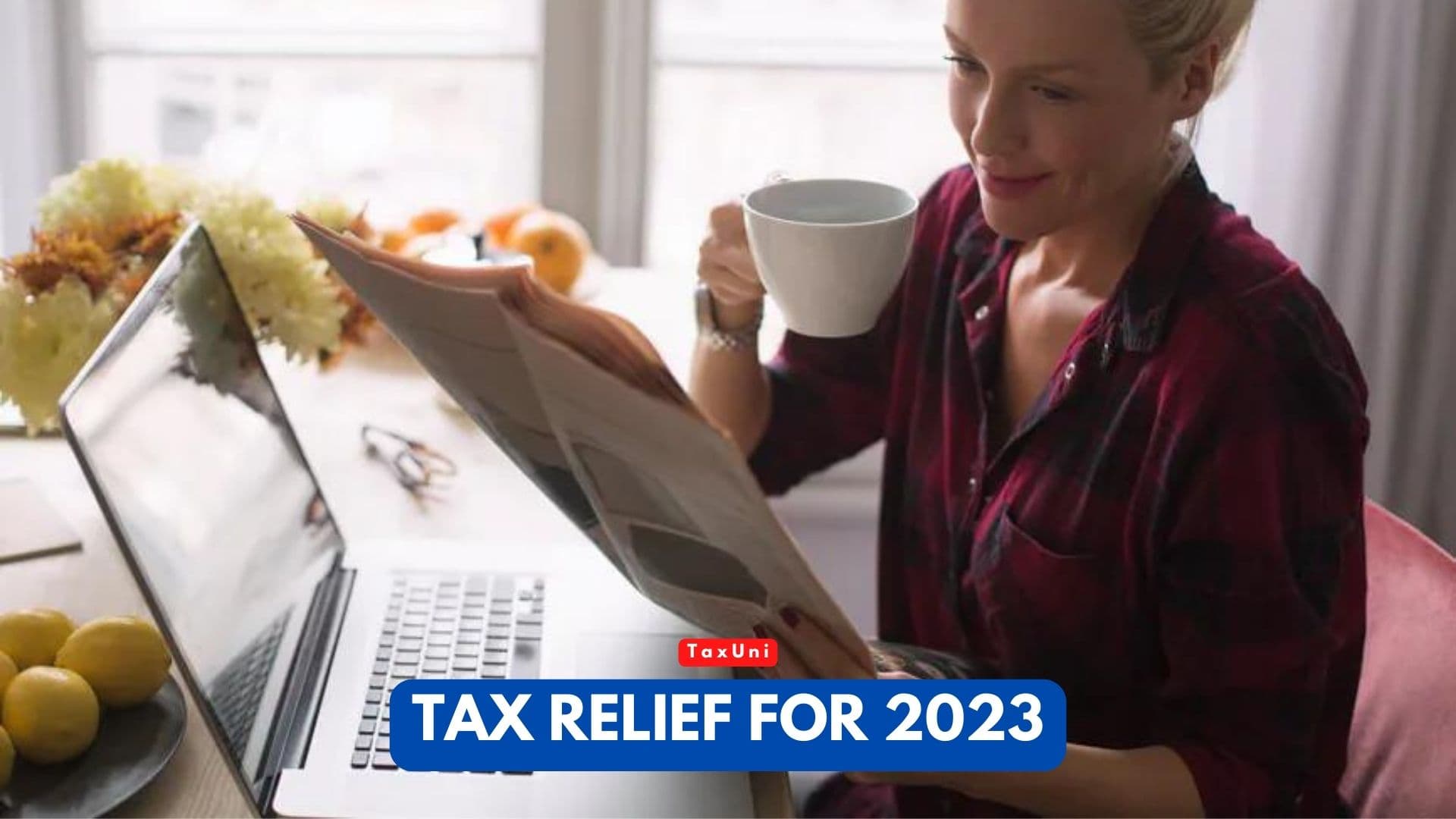Tax Relief For 2023
The Internal Revenue Service announced a number of changes to individual income tax brackets, deductions, and credits for the 2023 tax year. This includes a hike in the standard deduction, which may mean savings for people in all income brackets.

Contents
With inflation reaching four-decade highs, the Internal Revenue Service (IRS) is adjusting the tax brackets for the tax year 2023. These adjustments affect deductions and credits for individuals. As a result, you may see a bigger tax refund than you would have in the past. The IRS also increased the standard deduction, which means you could save more money in the long run. Here is some information about tax relief 2023 based on the news from the IRS.
Income Tax Reliefs and Credits
The Internal Revenue Service announced several changes to individual income tax brackets, deductions, and credits for the upcoming tax year. The changes cover an increase in the maximum EITC amount to $7,430, up from $6,935 in 2022. The revenue procedure also outlines the income thresholds and phase-outs for various tax reliefs and credits. In addition, the monthly limitation for qualified parking and transportation fringe benefits was increased to $300 from $200.
These changes are intended to offset the impact of inflation on the cost of living. Since 1985, individual federal tax brackets have automatically been indexed for inflation. This measure was introduced after a period of high inflation and is designed to prevent artificial tax increases caused by inflation. Because of this, people with incomes that haven’t increased with inflation could face lower tax bills in 2023. They could also receive a tax cut to offset the loss of income from inflation.

Tax Inflation Adjustments For the Tax Year 2023
The Internal Revenue Service (IRS) has announced dozens of inflation adjustments for the 2023 tax year. These changes will affect individual income tax brackets, deductions, credits, and more. The significant changes could keep many people in lower tax brackets and reduce their tax bills in 2024.
IRS adjusted the values in each bracket to save filers from some of the damage of the current inflation. Here are the inflation-adjusted tax brackets for single filers:
| Tax bracket | 2022 | 2023 | Adjustment Amount |
| 10% | 0 | 0 | 0 |
| 12% | $10,276 | $11,000 | $725 |
| 22% | $41,776 | $44,726 | $2,950 |
| 24% | $89,076 | $95,376 | $6,300 |
| 32% | $170,051 | $182,100 | $12,050 |
| 35% | $215,950 | $231,250 | $15,300 |
| 37% | $539,901 | $578,126 | $38,225 |
And the inflation-adjusted tax brackets for joint filers:
| Tax bracket | 2022 | 2023 | Difference |
| 10% | $0 | $0 | $0 |
| 12% | $20,551 | $22,001 | $1,450 |
| 22% | $83,551 | $89,451 | $5,900 |
| 24% | $178,151 | $190,751 | $12,600 |
| 32% | $340,101 | $364,201 | $24,100 |
| 35% | $431,901 | $462,501 | $30,600 |
| 37% | $647,851 | $693,751 | $45,900 |
Tax Relief Programs for 2023
In the last few months, several tax relief proposals have been put forth. However, many of them were not included in the final draft. These proposals included several measures to reduce tax burdens on businesses and individuals. Here are some examples. The first is the Expanded Child Tax Credit (CTC). This tax credit is a key measure for families with children, as it helps to keep many out of poverty.
There are also other tax relief programs like Homeowner Tax Rebate Credit, which is available to low-, middle, and senior-income households. Another program is the Enhanced School Tax Relief (STAR) credit for homeowners with incomes under $250,000. This credit will be a percentage of the homeowner’s existing STAR benefit.





